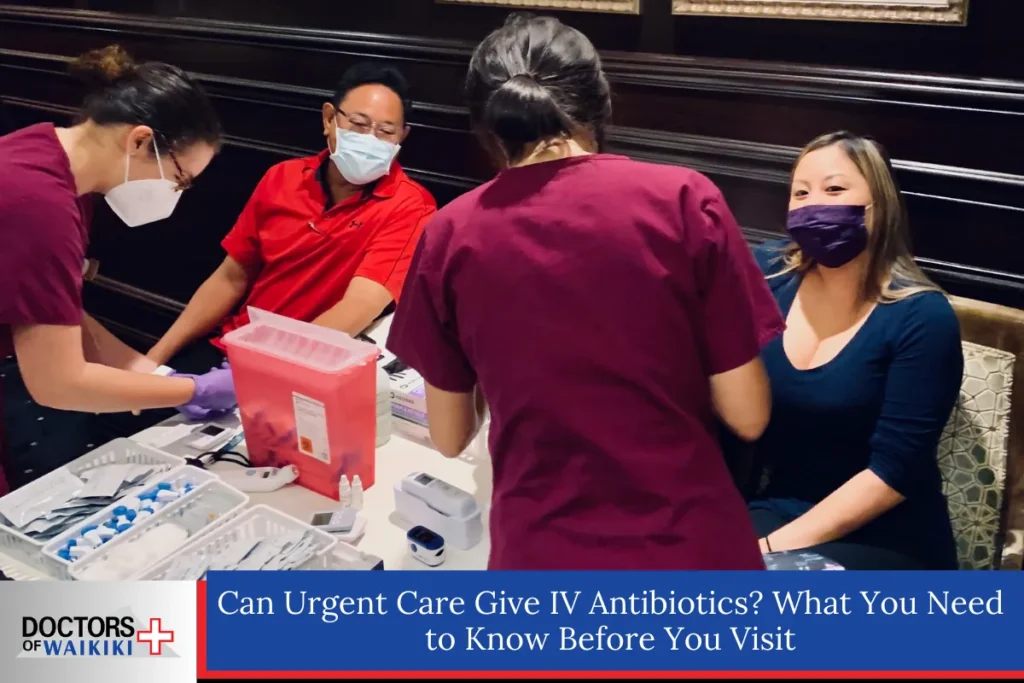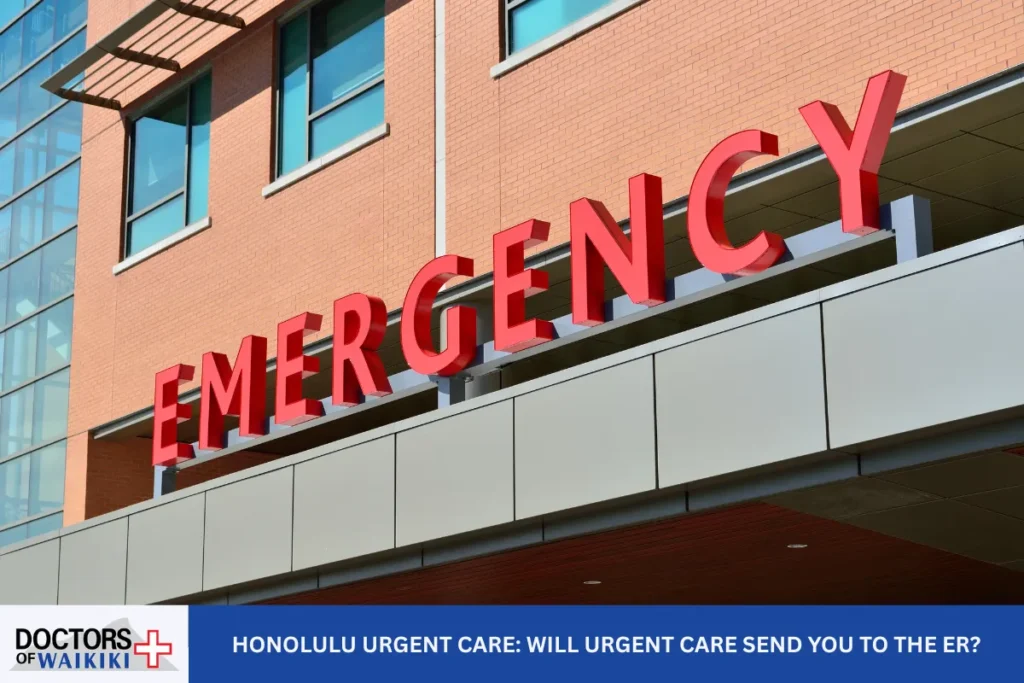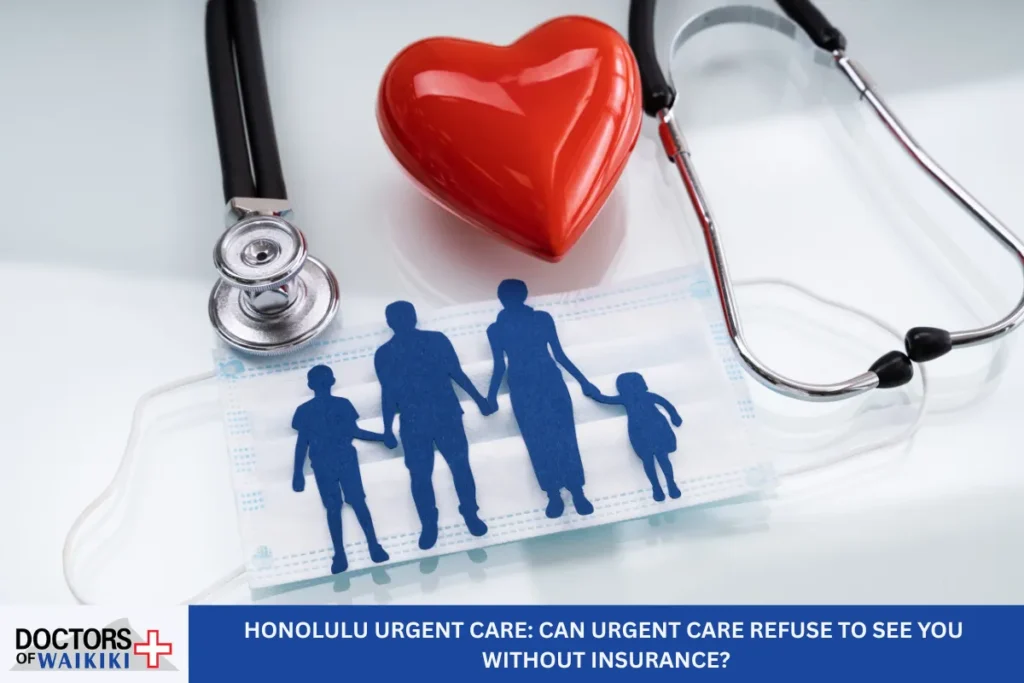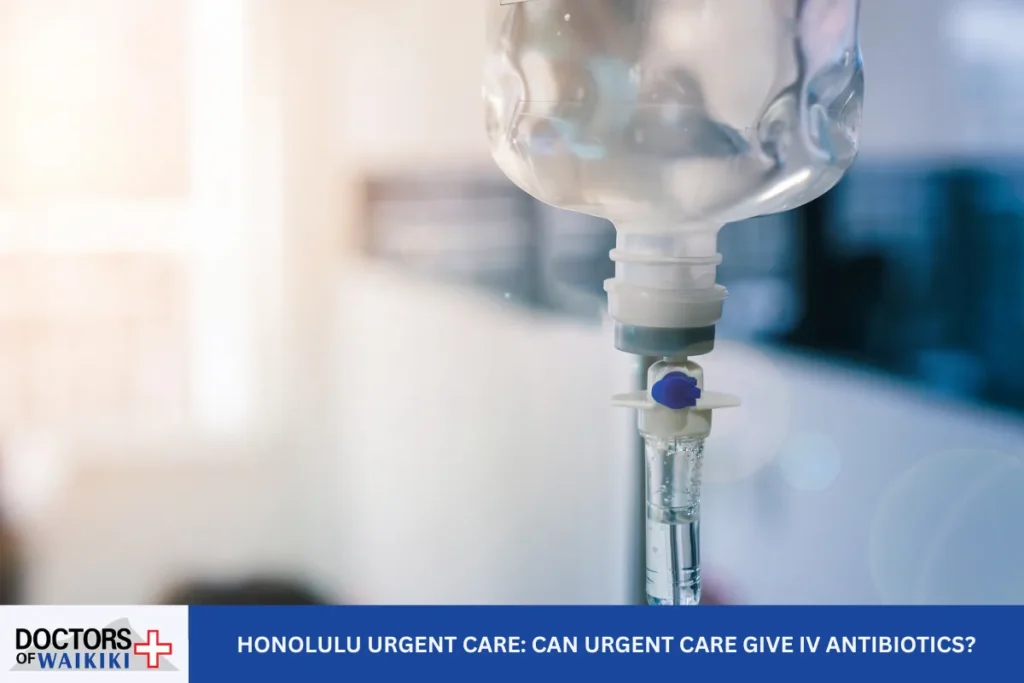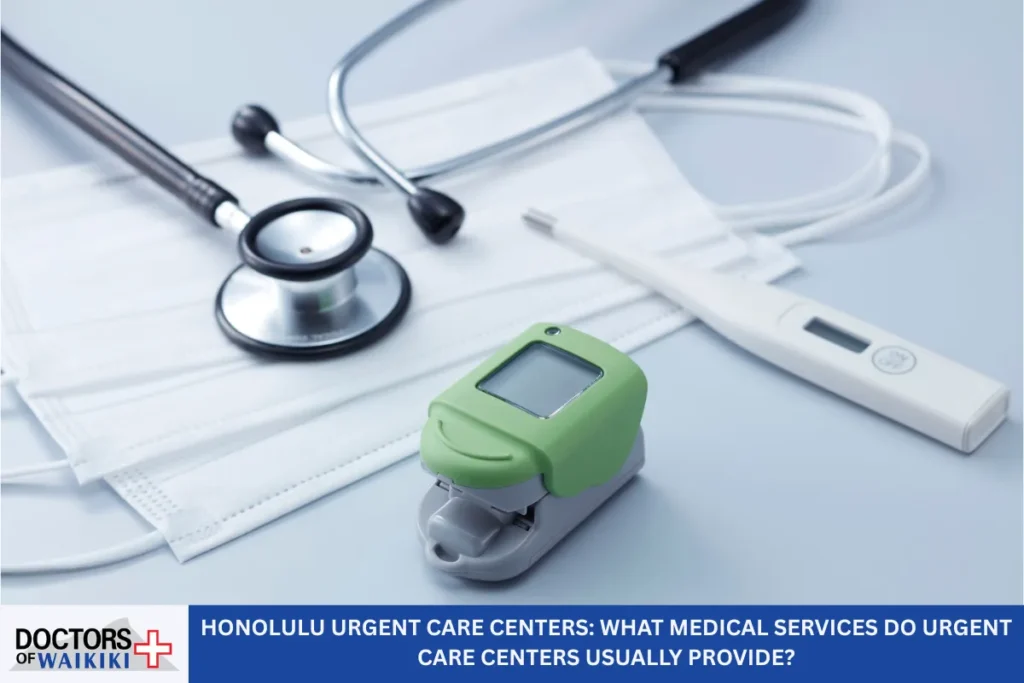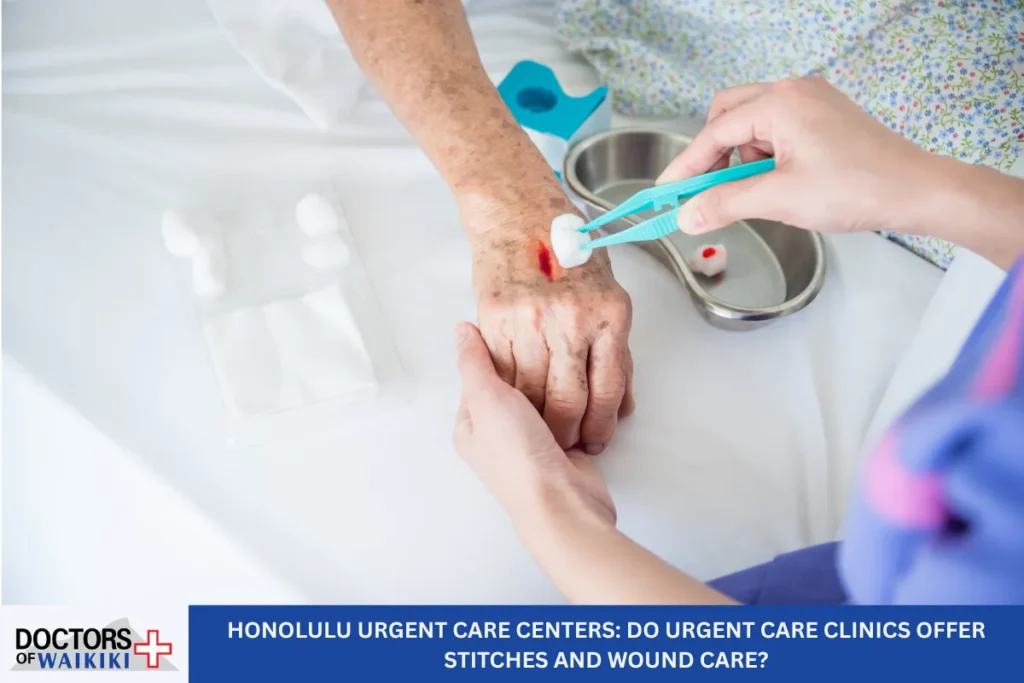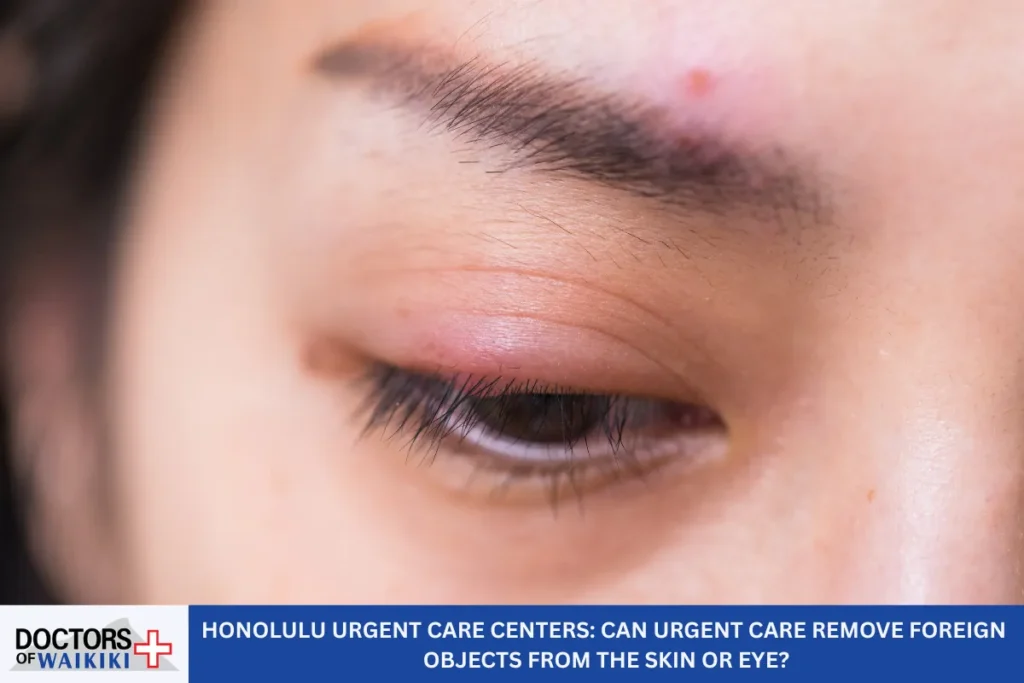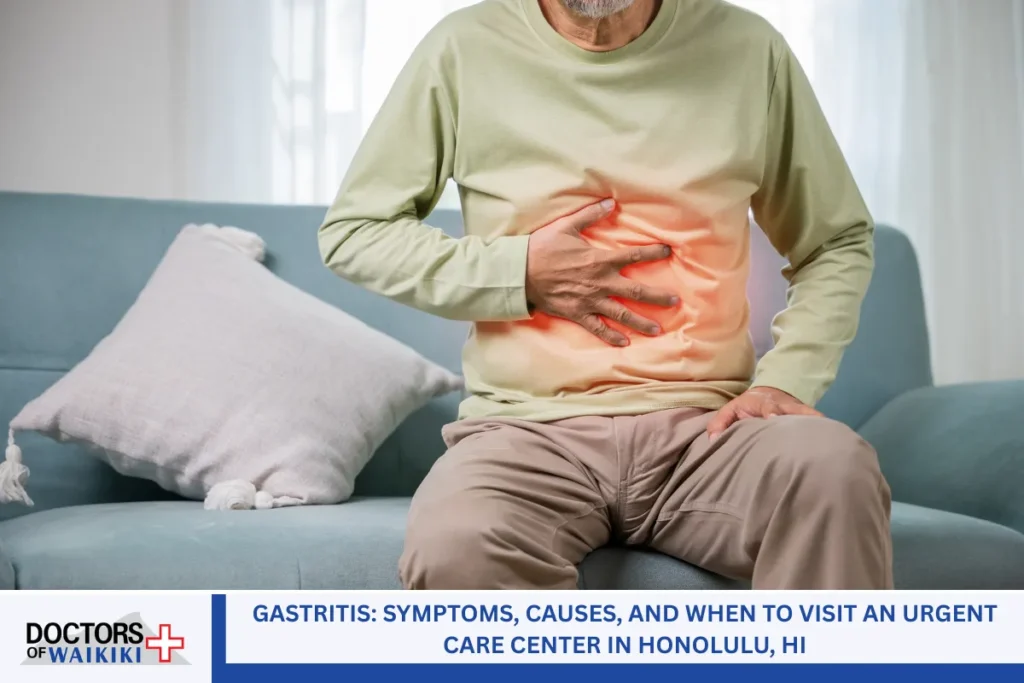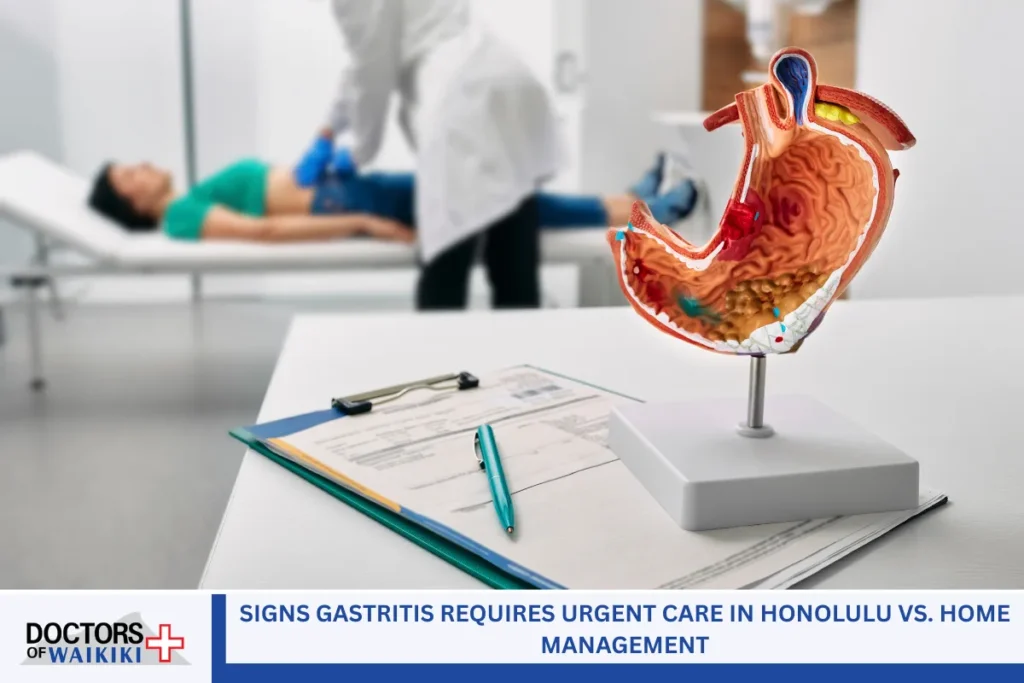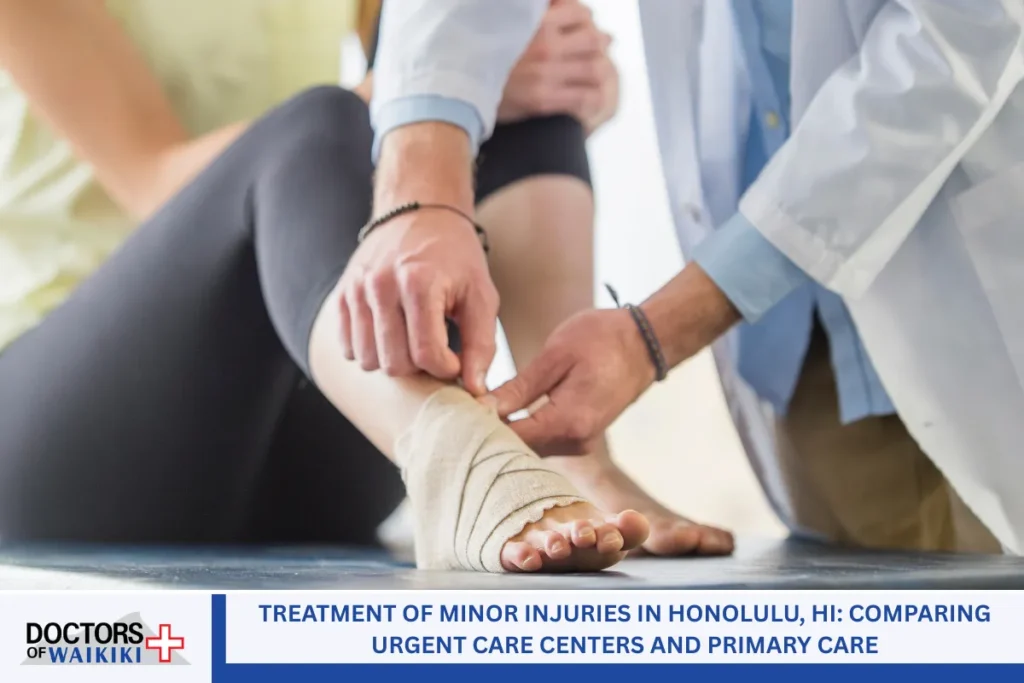You’re feeling worse by the hour—your fever’s climbing, the pain is getting intense, and over-the-counter meds just aren’t cutting it. You’re not alone if you’ve heard about IV antibiotics but aren’t sure where to go for treatment. Many people wonder if an urgent care center can handle something as serious as IV therapy—or if a trip to the emergency room is their only option.
Here’s the good news: in Honolulu, Hawaii, modern urgent care centers are more advanced than ever and often equipped to deliver IV antibiotics safely and efficiently. Knowing where to go for fast, effective care can save you time, stress, and money, whether you’re a local or visiting paradise for a much-needed vacation.
In this article, we’ll break down everything you need to know—when IV antibiotics are necessary, what to expect during treatment, and why urgent care may be the best place to get the help you need.
Why IV Antibiotics Might Be Necessary

Not all infections are created equal. Some are stubborn and won’t respond to the usual antibiotic pills. In cases like that, doctors may recommend IV antibiotics delivered straight into your bloodstream through a vein. This method ensures that the medication works quickly and at full strength.
But what kind of conditions require IV antibiotics?
Here are several common situations:
- Severe or deep skin infections (like cellulitis) can cause pain, redness, and swelling that spreads rapidly.
- Complicated urinary tract infections (UTIs): Especially in older adults or those with kidney involvement.
- Pneumonia that doesn’t respond to oral treatment includes cases where breathing becomes difficult, or the infection spreads.
- Post-surgical infections: If a wound gets infected after surgery, IV antibiotics may be needed to prevent it from worsening.
- Bone or joint infections (osteomyelitis or septic arthritis) require long-term IV antibiotic treatment under professional care.
- Immune-compromised patients: People undergoing chemotherapy, those with HIV, or others with weakened immune systems may need quicker, stronger treatment.
IV antibiotics are often used when:
- The infection is too aggressive to wait for oral antibiotics to absorb
- You’ve already tried oral antibiotics but didn’t improve
- You’re vomiting or can’t keep the medicine down
- The infection is in a hard-to-reach part of the body
Getting IV antibiotics can drastically improve your recovery time and stop serious complications before they start.
Can an Urgent Care Center Handle IV Antibiotic Treatment?

Yes—and many urgent care centers in Honolulu, Hawaii are fully equipped to provide IV antibiotic therapy on-site. Many people don’t realize that urgent care centers today are far more advanced than they were years ago. They’re not just for colds and sprains anymore.
Here’s what an urgent care center in Honolulu can typically offer when it comes to IV treatment:
- Licensed healthcare professionals, including doctors, physician assistants, and nurses trained in administering IV therapy
- On-site diagnostic tools like rapid lab tests, Blood draws, and imaging to confirm infections
- A clean and sterile IV area where you can sit or lie down while receiving your medication
- Follow-up treatment plans, including oral antibiotics or second rounds of IV medication
You might think only a hospital can deliver this level of care—but that’s not the case anymore. As long as your infection is manageable and doesn’t require hospitalization, an urgent care center can be the perfect in-between option: faster than waiting at the ER and more specialized than a primary care visit.
When It’s Safe to Choose Urgent Care Over the ER

Deciding where to go for treatment can feel stressful when you’re sick. If you’ve got an infection that’s getting worse, you might think the ER is your only option. But that’s not always true.
Here’s how to know when an urgent care center is the right choice:
Go to an urgent care center if:
- You’ve got a mild-to-moderate infection that hasn’t improved after oral antibiotics
- Your symptoms are uncomfortable but not life-threatening
- You’re running a low-grade fever (under 103°F)
- The infected area is red or swollen but not rapidly spreading
- You feel generally well enough to walk, talk, and eat
- You need treatment outside of regular doctor’s hours—even on weekends or holidays
Choose the ER if:
- You have a very high fever (over 104°F) that isn’t coming down
- The infection is spreading rapidly, especially with red streaks or pus
- You’re feeling faint, confused, or short of breath
- You suspect sepsis, which is a medical emergency
- You’re immune-compromised, and the symptoms are worsening quickly
Urgent care centers fill that important space between primary care and emergency services. They’re there for non-life-threatening issues that still need attention fast—like an infection that’s not letting up.
What to Expect During Your Visit

First time getting IV antibiotics at an urgent care center? Don’t worry—it’s a straightforward process, and Honolulu’s urgent care providers are used to helping residents and visitors get back on their feet quickly.
Here’s what your visit will look like:
Check-In and Paperwork
- Bring your photo ID and insurance card (if you have one).
- You’ll fill out a short form with your medical history, symptoms, and any allergies.
Examination by a Healthcare Provider
- A doctor or PA will check your vital signs and examine the infection site.
- They may perform lab tests or imaging to determine the severity and cause.
IV Placement and Administration
- The provider will insert a small needle (catheter) into your arm if IV antibiotics are needed.
- You’ll receive the medication through an IV drip over 30–60 minutes.
- You’ll be monitored for any side effects like dizziness, nausea, or allergic reactions.
Aftercare and Discharge
- You’ll receive written instructions for home care and may be asked to return for follow-up doses.
- The clinic may also prescribe oral antibiotics to finish your treatment.
You won’t be rushed. Staff members will explain everything clearly, and you’ll walk out with a plan to get better fast.
Insurance and Payment at Honolulu Urgent Care Centers

The good news? Urgent care centers in Honolulu accept various insurance plans, including coverage for tourists visiting from the mainland or international destinations.
Here’s what to expect with payment:
- Insurance: Most centers accept Hawaii-based providers and major insurers like HMSA, HMAA, and even some travel insurance plans.
- No Insurance? No Problem: Many offer self-pay pricing and package rates for common services.
- Cost Comparison: ER visits can cost thousands of dollars—even with insurance. Urgent care visits often range from $150–$300 depending on the treatment.
- Itemized Billing: You’ll often know the costs upfront, which is rare at the ER.
Always call ahead or check the clinic’s website if you’re unsure about coverage. Rest assured, urgent care centers in Honolulu are designed to serve both locals and visitors with clear, transparent pricing.
What Makes Honolulu Urgent Care Centers Unique?

Getting sick on a tropical island isn’t ideal—but luckily, Honolulu’s urgent care centers are well-prepared for it. They serve a diverse population, from native Hawaiians to international travelers, and understand the needs of both.
What makes them stand out?
- Open every day—even holidays: Need treatment on Christmas Day? No problem.
- Walk-in friendly: You don’t need an appointment, even for IV antibiotics.
- Multilingual staff: Many centers offer support in Japanese, Korean, Tagalog, and more.
- Quick turnaround: Most patients are in and out in under an hour.
- Close to resorts and downtown hotels: Many clinics are located near major tourist hubs, making them easily accessible without a car.
In Honolulu, urgent care centers are more than just convenient—they’re essential to the island’s healthcare system. Whether you live in Kalihi or are staying near Waikīkī, high-quality care is never far away.
Tips Before Your Visit
A little preparation can help your urgent care visit go smoothly—especially when you’re dealing with a serious infection. Here’s what to bring and how to prepare:
- Photo ID and insurance card
- A list of your current medications (especially if you’re traveling)
- Allergy history, especially to medications
- Notes on your symptoms, including when they started and what’s gotten worse
Other helpful tips:
- Stay hydrated before your IV treatment
- Avoid eating a heavy meal right before your visit if you feel nauseous
- Bring someone with you if you feel dizzy or weak
You’ll be more comfortable and get faster treatment when the staff has the necessary information.
Stay Safe: When to Avoid Self-Medicating
We’ve all been tempted to grab leftover antibioticmes from the medicine cabinet or borrow some from a friend. But this can be dangerous—and even life-threatening.
Here’s why self-medicating is a bad idea:
- Wrong medication: Not all antibiotics treat the same infection. Using the wrong one could make things worse.
- Incomplete treatment: You may stop too soon, allowing the bacteria to return even stronger.
- Masking symptoms: You might cover up a serious condition without truly fixing it.
- Antibiotic resistance: Misuse increases the chance that future infections won’t respond to treatment.
Instead, let your local urgent care center professionals determine what’s best. They can guide you to the right treatment—without any guesswork.
Making the Right Call for IV Antibiotics

When you’re sick, your top priority is feeling better—fast. And if your infection needs IV antibiotics, knowing where to go is critical. Honolulu’s urgent care centers are fully equipped to help when quick, professional care is needed, but a hospital visit isn’t necessary.
These walk-in clinics bridge the gap between emergency rooms and primary care, offering fast service, flexible hours, and expert treatment. Whether you’re a lifelong islander or just landed in Waikīkī, you can count on your local urgent care center to get you back to health quickly and safely.
Don’t wait until things get worse. Make the smart choice, and let a Honolulu urgent care center take care of you.
Honolulu Urgent Care Center – Doctors of Waikiki

Doctors of Waikiki is a state-of-the-art walk-in clinic in Hawaii that offers comprehensive medical care to locals and visitors. We specialize in urgent care, minor surgeries, and general medical services, ensuring quick and efficient treatment. Our services include immigration medical examinations, health screenings, and green card medical exams, making us a trusted choice for those requiring USCIS medical exams.
We are dedicated to your health and well-being and are committed to providing top-notch care. We are also open 7 days a week (including all holidays). And most of our staff are bilingual. Call us today at (808) 922-2112 to get the care you need—fast!
FAQs About IV Antibiotics at Urgent Care Clinics
Can I get IV antibiotics for bacterial infections at an urgent care clinic?
Many urgent care clinics now offer IV antibiotics for treating bacterial infections requiring fast-acting medication. These include more severe cases of sinus infections, ear infections, kidney infections, and skin infections like cellulitis. While oral antibiotics are commonly prescribed for minor infections, IV antibiotics are more effective when the infection is aggressive or if the patient can’t tolerate oral meds due to vomiting or Severe dehydration.
If you’re experiencing symptoms like a high fever, chills, or worsening pain, especially after already taking antibiotics, you may need IV treatment. Board-Certified Emergency Medicine physicians at urgent care facilities can assess your medical condition and determine whether IV antibiotics or IV fluids are necessary.
Before beginning treatment, urgent care doctors will review your medical history, assess your blood pressure, and order blood tests to confirm the infection type. The goal is fast, effective care for non-life-threatening conditions that still need serious attention.
What kinds of medical conditions are treated with IV antibiotics at urgent care facilities?
Urgent care facilities in Honolulu treat a wide range of infections and non-emergent injuries that benefit from IV antibiotics or intravenous fluids. This includes:
- Cellulitis and other skin infections
- Severe sore throats like strep throat when oral meds fail
- Complicated UTIs or kidney infections
- Resistant sinus infections
- Ear infections causing swelling and fever
- Infections in patients with chronic conditions or chronic illnesses
These types of clinical conditions are common in both locals and travelers. Many tourists, especially during flu season, experience symptoms that worsen into bacterial infections, needing stronger interventions.
In contrast to the ER, urgent care provides shorter wait times, quicker access to medical professionals, and the ability to walk in without a referral from a primary care doctor or primary care provider. They also treat minor and eye infections and help manage muscle pains related to infections or inflammation.
How do I know when to choose urgent care over emergency care for infection treatment?
Deciding between urgent care and emergency care comes down to the level of emergency care required. Here’s a quick breakdown to help you choose the right setting:
Choose an urgent care center if:
- The infection is moderate, not life-threatening
- You’re experiencing flu symptoms, sore throats, or abdominal pain that isn’t severe
- You need fluids for dehydration
- Your health concerns aren’t escalating quickly
- You want fast access to health care providers without the cost of the ER
Go to the emergency room if:
- You have Blood in your vomit
- You’re showing signs of chest pain
- You’ve fainted or feel severely weak
- You have a very high or low blood pressure
- There are signs of complex emergency care needs, such as eye injuries or uncontrolled bleeding
Urgent care clinics are ideal for non-urgent conditions that still require effective treatments, quick attention, and professional care. They serve as a middle ground between your regular doctor and the ER.
What types of tests are done before receiving IV antibiotics at an urgent care center?
Urgent care doctors may perform a few diagnostic steps before starting any medical treatment, especially IV antibiotics, to ensure safe and accurate care. This process is essential to the practice of medicine and helps tailor the treatment to your specific infection.
Common procedures include:
- Blood tests to identify infection markers or organ stress
- Urinalysis for kidney infections or UTIs
- A blood sample to assess white blood cell count and inflammation
- Throat swabs to test for strep throat
- Vitals check, including blood pressure, temperature, and heart rate
- Basic imaging or X-rays if the infection is suspected in deeper tissues or bones
These tests help rule out more complex conditions that might require hospitalization and ensure that the chosen antibiotic is effective for the bacteria in your body. Once confirmed, you’ll receive IV antibiotics and possibly intravenous fluids if you’re also dehydrated or showing signs of electrolyte imbalance.
Can urgent care doctors handle chronic illnesses that need urgent attention?
Urgent care doctors aren’t a replacement for your primary care provider but can assist when chronic conditions flare up unexpectedly. Let’s say you have diabetes or high blood pressure and develop an infection—urgent care providers can step in to stabilize the issue.
Here’s what they can do:
- Prescribe or adjust medications temporarily
- Monitor your blood pressure
- Offer Pain management solutions
- Provide fluids for dehydration
- Refer you back to your primary care doctor for long-term follow-up
While your regular doctor typically handles chronic disease management, urgent care can address medical issues that require timely intervention. This includes health concerns like infections on top of existing chronic illnesses, which can complicate recovery if not treated quickly.
Urgent care is also helpful if you’re between providers or waiting for a specialist. It’s a valuable part of your healthcare network, especially during weekends or holidays.
Read: Walk-In Urgent Care in Honolulu, HI: What Services Are Offered?

